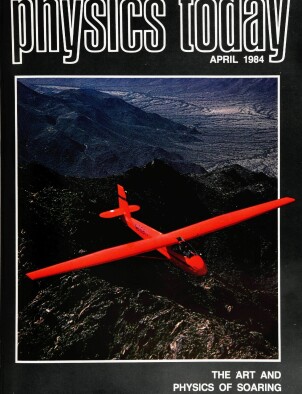Time‐resolution experiments using x‐ray synchrotron radiation
DOI: 10.1063/1.2916191
Many important biological, chemical and physical phenomena take place on time scales of nanoseconds or picoseconds. Those working to unravel the time development of such fast processes have long recognized that pulsed electromagnetic radiation and particle beams often make more incisive probes than do continuous emissions. During the last decade, a powerful new device joined the arsenal of modulated radiation sources available to scientists attacking problems that require good temporal resolution—the high‐energy storage ring.
This article is only available in PDF format
References
1. See for example R. Lopez‐Delgado, A. Tramer, I. H. Munro, Chem. Phys. 5, 72 (1974); https://doi.org/CMPHC2
K. M. Monahan, V. Rehn, Nucl. Inst. and Meth. 152, 225 (1978); https://doi.org/NUIMAL
N. Schwentner, U. Hahn, D. Einfeld, G. Muhlhaupt, Nucl. Inst. and Meth. 167, 499 (1979); https://doi.org/NUIMAL
I. H. Munro, N. Schwentner, Nucl. Inst. and Meth. 208, 819 (1983);
I. H. Munro, A. P. Sabersky in Synchrotron Radiation Research, H. Winick, S. Doniach, eds., Plenum, New York (1980).2. For a detailed description of the operation of storage rings, see M. Sands in Proceedings of the International School of Physics—Enrico Fermi, B. Touschek, ed., Academic, New York (1971), page 257.
3. C. Benard, M. Rousseau, J. Opt. Soc. Am. 64, 1433 (1974); https://doi.org/JOSAAH
R. Lopez‐Delgado, Opt. Comm. 27, 195 (1978).https://doi.org/OPCOB84. R. L. Cohen, G. L. Miller, K. W. West, Phys. Rev. Letts. 41, 381 (1978).https://doi.org/PRLTAO
5. J. C. Wang, R. F. Wood, P. O. Pronko, Appl. Phys. Lett. 35, 455 (1978); https://doi.org/APPLAB
R. F. Wood, G. E. Giles, Phys. Rev. B 23, 2923 (1981).https://doi.org/PRBMDO6. V. Heine, J. A. Van Vechten, Phys. Rev. B 13, 1622 (1976); https://doi.org/PLRBAQ
J. A. Van Vechten, R. Tsu, F. W. Saris, D. Hoonhout, Phys. Lett. 74A, 417 (1979);
J. A. Van Vechten, M. Wautelet, Phys. Rev. B 23, 5543 (1981).https://doi.org/PRBMDO7. B. C. Larson, C. W. White, T. S. Noggle, D. M. Mills, Phys. Rev. Lett. 48, 337 (1982); https://doi.org/PRLTAO
B. C. Larson, C. W. White, T. S. Noggle, J. F. Barhorst, D. M. Mills, Appl. Phys. Lett. 42, 282 (1983).https://doi.org/APPLAB8. C.‐C. Glüer, W. Graeff, H. Moller, Nucl. Inst. and Meth. 208, 701 (1983).
9. P. A. Goddard, G. F. Clark, B. K. Tanner, R. W. Whatmore, Nucl. Inst. and Meth. 208, 705 (1983);
R. W. Whatmore, P. A. Goddard, B. K. Tanner, G. F. Clar, Nature 299, 44 (1982).https://doi.org/NATUAS10. P. G. Debrunner, H. Frauenfelder, Ann. Rev. of Phys. Chem. 33, 283 (1982);
J. A. McCammon, M. Karplus, Acc. Chem. Res. 16, 187 (1983).https://doi.org/ACHRE411. For a more detailed account of x‐ray absorption spectroscopic techniques, see H. Winick, S. Doniach, eds., Synchrotron Radiation Research, Plenum, New York (1980).
12. D. M. Mills, A. Lewis, A. Harootunian, J. Huang, B. Smith, Science 223, 811 (1984).https://doi.org/SCIEAS
13. T. A. Carlson, R. M. White, J. Chem. Phys. 44, 4510 (1966).https://doi.org/JCPSA6
14. J. B. Hastings, V. O. Kostroun, Nucl. Inst. and Meth. 208, 815 (1983).
15. V. Rehn, Nucl. Inst. and Meth. 177, 193 (1980); https://doi.org/NUIMAL
E. Gratton, R. Lopez‐Delgado, Rev. Sci. Inst. 50, 789 (1979).https://doi.org/RSINAK16. M. Hart in Characterization of Crystal Growth Defects by X‐Ray Methods, B. K. Tanner, D. K. Bowen, eds., Plenum, New York (1980), page 479.
17. M. Hart, D. P. Siddons, Nature 275, 45 (1978).https://doi.org/NATUAS
18. For a description of wigglers and undulators for enhanced x‐ray flux, see H. Winick, G. Brown, K. Halbach, J. Harris, PHYSICS TODAY, May 1981, page 50;
G. Brown, K. Halbach, J. Harris, H. Winick, Nucl. Inst. and Meth. 208, 65 (1983).
More about the Authors
Dennis M. Mills. Cornell High‐Energy Synchrotron Source, Ithaca, New York.




